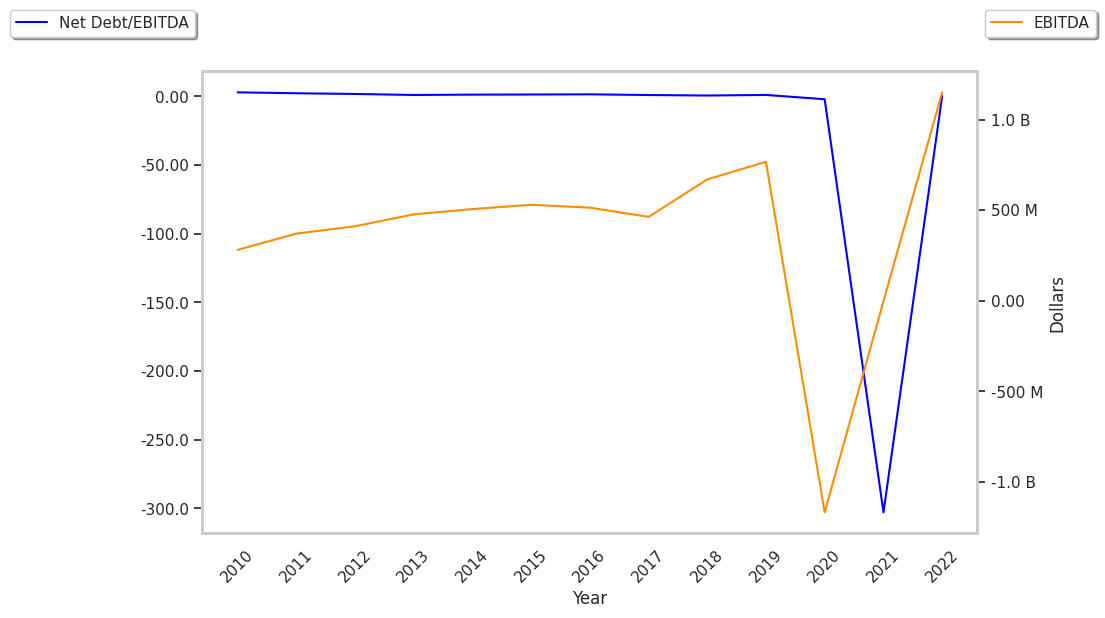One of Wall Street's biggest winners of the day is Live Nation Entertainment, a leisure company whose shares have climbed 3.4% to a price of $90.06 -- 18.58% below its average analyst target price of $110.61.
The average analyst rating for the stock is buy. LYV outperformed the S&P 500 index by 3.0% during today's evening session, and by 2.4% over the last year with a return of 17.4%.
Live Nation Entertainment, Inc. operates as a live entertainment company. The company is a consumer cyclical company, whose sales and revenues correlate with periods of economic expansion and contraction. The reason behind this is that when the economy is growing, the average consumer has more money to spend on the discretionary (non necessary) products that cyclical consumer companies tend to offer. Consumer cyclical stocks may offer more growth potential than non-cyclical or defensive stocks, but at the expense of higher volatility.
Live Nation Entertainment's trailing 12 month P/E ratio is 60.0, based on its trailing EPS of $1.5. The company has a forward P/E ratio of 39.7 according to its forward EPS of $2.27 -- which is an estimate of what its earnings will look like in the next quarter.
The P/E ratio is the company's share price divided by its earnings per share. In other words, it represents how much investors are willing to spend for each dollar of the company's earnings (revenues minus the cost of goods sold, taxes, and overhead). As of the first quarter of 2023, the consumer discretionary sector has an average P/E ratio of 22.96, and the average for the S&P 500 is 15.97.
The main limitation with P/E ratios is that they don't take into account the growth of earnings. This means that a company with a higher than average P/E ratio may still be undervalued if it has high projected earnings growth. Conversely, a company with a low P/E ratio may not present a good value proposition if its projected earnings are stagnant.
When we divide Live Nation Entertainment's P/E ratio by its projected 5 year earnings growth rate, we obtain its Price to Earnings Growth (PEG) ratio of 0.66. Since a PEG ratio of 1 or less may indicate that the company's valuation is proportionate to its growth potential, we see here that investors are undervaluing LYV's growth potential .
To better understand the strength of Live Nation Entertainment's business, we can analyse its operating margins, which are its revenues minus its operating costs. Consistently strong margins backed by a positive trend can signal that a company is on track to deliver returns for its shareholders. Here's the operating margin statistics for the last four years:
| Date Reported | Total Revenue ($ k) | Operating Expenses ($ k) | Operating Margins (%) | YoY Growth (%) |
|---|---|---|---|---|
| 2023 | 21,200,869 | 3,440,645 | 5 | 25.0 |
| 2022 | 16,681,254 | 2,955,884 | 4 | 157.14 |
| 2021 | 6,268,447 | 1,754,822 | -7 | 92.13 |
| 2020 | 1,861,178 | 1,524,342 | -89 | -3066.67 |
| 2019 | 11,547,969 | 2,145,486 | 3 | 0.0 |
| 2018 | 10,787,800 | 1,997,028 | 3 |
- Average operating margins: -13.5 %
- Average operating margins growth rate: 8.3 %
- Coefficient of variability (lower numbers indicate less volatility): 10395.98 %
Another key to assessing a company's health is to look at its free cash flow, which is calculated on the basis of its total cash flow from operating activities minus its capital expenditures. Capital expenditures are the costs of maintaining fixed assets such as land, buildings, and equipment. From Live Nation Entertainment's last four annual reports, we are able to obtain the following rundown of its free cash flow:
| Date Reported | Cash Flow from Operations ($ k) | Capital expenditures ($ k) | Free Cash Flow ($ k) | YoY Growth (%) |
|---|---|---|---|---|
| 2023 | 1,666,147 | 446,101 | 1,220,046 | -17.83 |
| 2022 | 1,832,063 | 347,206 | 1,484,857 | -8.78 |
| 2021 | 1,780,568 | 152,734 | 1,627,834 | 225.49 |
| 2020 | -1,083,388 | 213,746 | -1,297,134 | -987.13 |
| 2019 | 469,783 | 323,566 | 146,217 | -79.16 |
| 2018 | 941,586 | 239,833 | 701,753 |
- Average free cash flow: $647.26 Million
- Average free cash flown growth rate: 26.1 %
- Coefficient of variability (the lower the better): 324.71 %
Free cash flow represents the amount of money that is available for reinvesting in the business, or for paying out to investors in the form of a dividend. With a positive cash flow as of the last fiscal year, LYV is in a position to do either -- which can encourage more investors to place their capital in the company.
Value investors often analyze stocks through the lens of its Price to Book (P/B) Ratio (market value divided by book value). The book value refers to the present value of the company if the company were to sell off all of its assets and pay all of its debts today - a number whose value may differ significantly depending on the accounting method.
Live Nation Entertainment's P/B ratio indicates that the market value of the company exceeds its book value by a factor of 92, so the company's assets may be overvalued compared to the average P/B ratio of the Consumer Discretionary sector, which stands at 4.24 as of the first quarter of 2023.
Live Nation Entertainment is by most measures overvalued because it has an inflated P/E ratio, an elevated P/B ratio, and irregular cash flows with an upwards trend. The stock has poor growth indicators because it has a no PEG ratio and consistently negative margins with a positive growth rate. We hope you enjoyed this overview of LYV's fundamentals.



